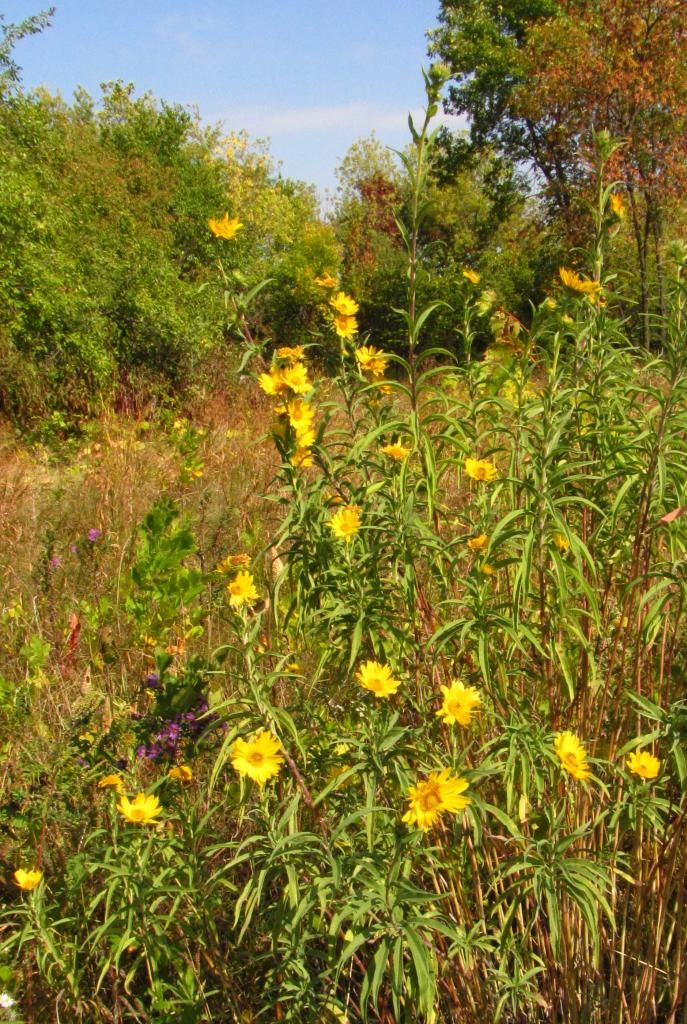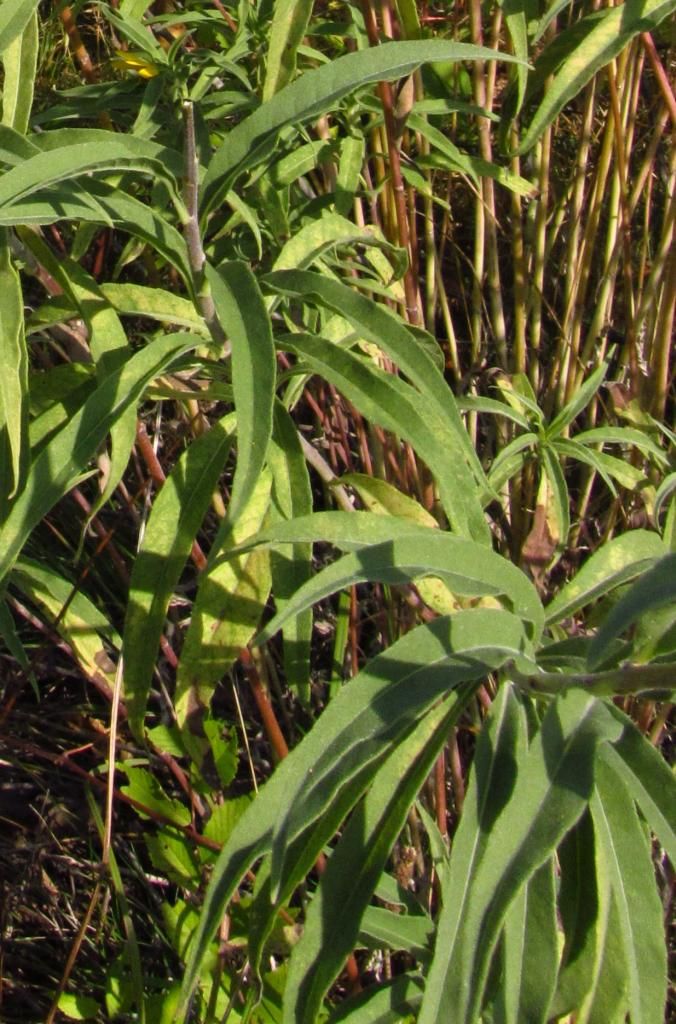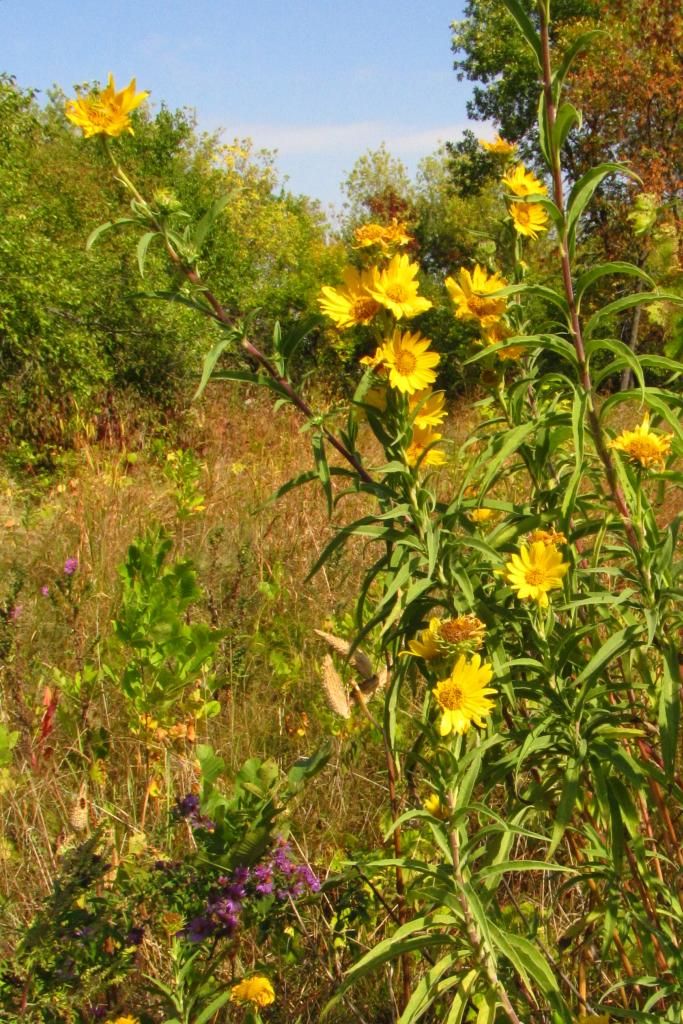The wildflower season is winding down, but I plan to do a few more of these posts before putting the series on break for the winter.
Most Iowa wildflowers have gone to seed, but you may still find some goldenrods or asters blooming on prairies or at woodland edges. After the jump I’ve enclosed several photos of a striking yellow aster I found recently along the Meredith bike trail between Gray’s Lake and downtown Des Moines.
This is an open thread: all topics welcome.
Maximilian sunflower (Helianthus maximiliani) is named after the naturalist Prince Alexander Philipp Maximilian. During the 1830s, he explored the American west and described this plant, among many others.
A lot of the yellow asters resemble each other. The Lady Bird Johnson Wildflower Center website says of this plant:
The several tall, leafy, unbranched stems of michaelmas-daisy or maximilian sunflower grow to a height of 3-10 ft. Leaves are long and narrow, up to 10 inches near the bottom and as short as 2 inches near the top. They are alternate, coarse and hairy, slightly wavy on the edges, often folded lengthwise, slightly toothed and very pointed. Numerous yellow flower heads grow on their own stalks terminally and from leaf axils. The flower head is up to 5 inches across, with 15-19 ray flowers, deeply veined and slightly toothed on the tip. The center is 1 inch or more across, green to dark brown.
When I saw this group of flowers, I knew they were not Jerusalem artichoke, but I couldn’t identify them, so I asked around.
Leland Searles pointed out that the leaves were wrong for sawtooth sunflower, and the flowers and stems ruled out many other species that bloom in the early fall. He suggested Maximilian sunflower, which blooms in Iowa from the late summer into October. According to the Illinois Wildflowers website,
This plant has attractive foliage and flowers, and it is easy to identify because of the unusual leaves. These narrow leaves are longer (up to 12″) than the leaves of other Helianthus spp. in Illinois, and they have a distinctive light green or greyish green appearance because of their fine white hairs. Two native species, Helianthus grosseserratus (Sawtooth Sunflower) and Helianthus giganteus (Giant Sunflower), also have narrow leaves, but they are not covered with dense white hairs. Another species resembling Maximilian’s Sunflower is Helianthus salicifolius (Willow Sunflower), which occurs in the southern Great Plains. The Willow Sunflower has narrow leaves that are even longer than Maximilian’s Sunflower, but they are only ½” across or less.
Here’s a closer look at those leaves.
According to Wildflowers of the Tallgrass Prairie by Sylvan Runkel and Dean Roosa,
The seeds of the sunflowers have served as food for man, livestock, poultry, and wildlife. They are widely used for wild bird feed. A fine oil can be extracted from the seeds; it is used in cooking, for making soap, and for various industrial uses.
A fiber used for textiles has been obtained from the strong, coarse stalks, and a yellow dye has been obtained from the flowers.
Here are a couple more shots of the flowers. The purple blooms in the background are some kind of aster, but I’m not sure which one.





1 Comment
Aster
My best guess is New England aster.
PrairieFan Tue 2 May 9:17 PM